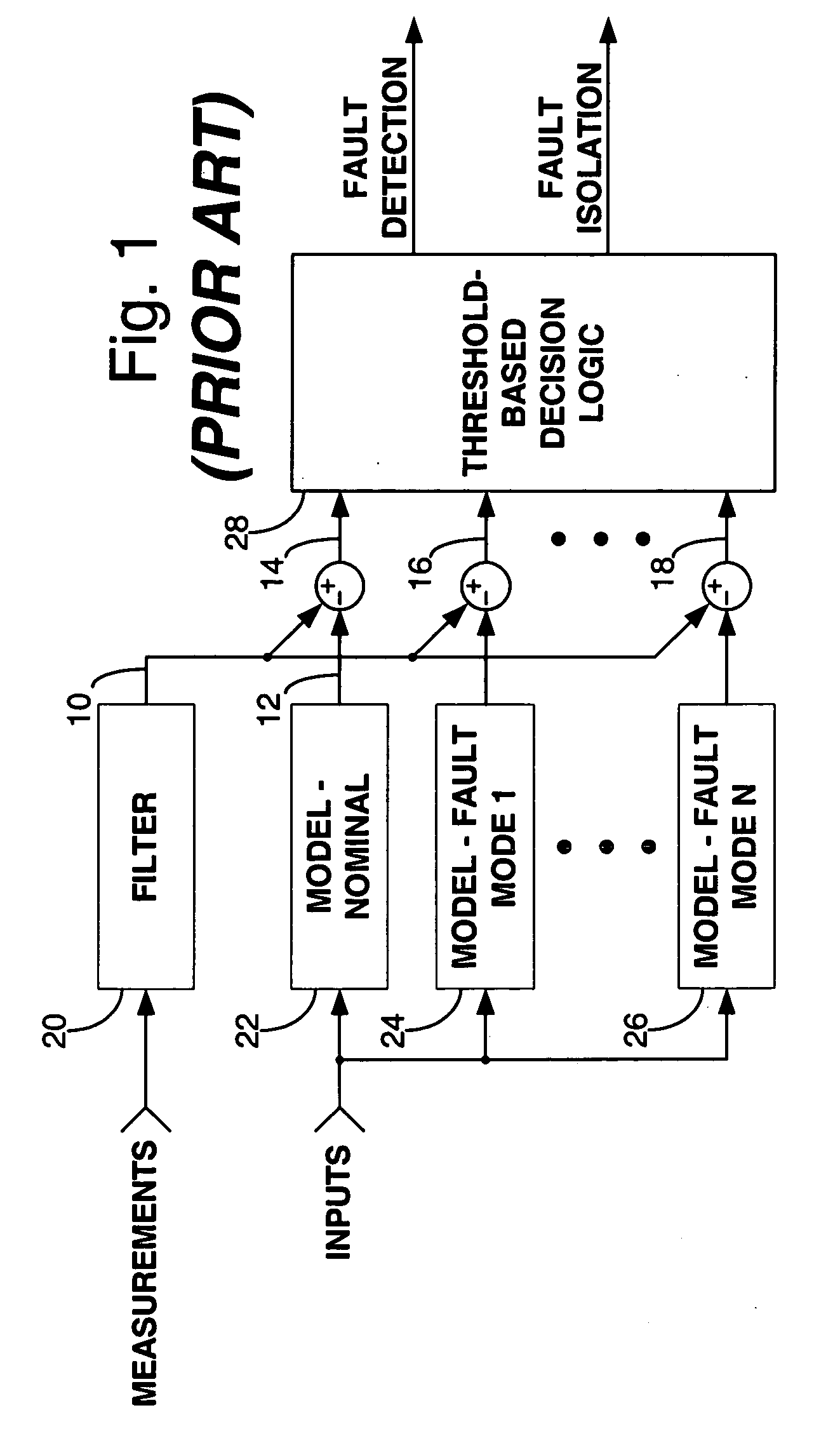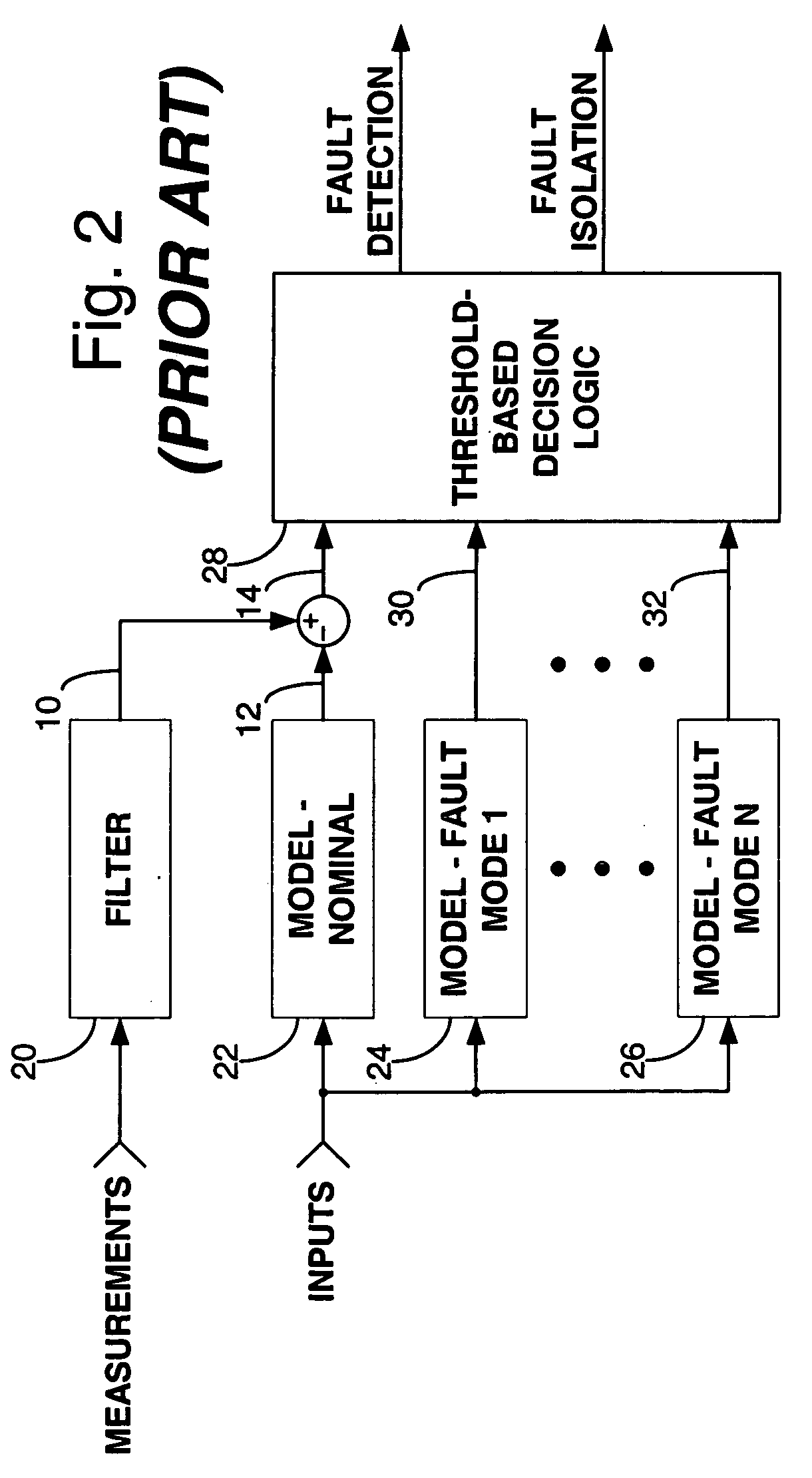Model-based fault detection and isolation for intermittently active faults with application to motion-based thruster fault detection and isolation for spacecraft
a technology of motion-based thruster and fault detection, applied in the field of information processing systems, can solve the problems of limiting the viability of many general-purpose methods, needing additional sensors, and increasing the cost, complexity, mass and volume requirements of spacecra
- Summary
- Abstract
- Description
- Claims
- Application Information
AI Technical Summary
Benefits of technology
Problems solved by technology
Method used
Image
Examples
Embodiment Construction
[0019] In FIG. 1, which shows a type of FDI in the prior art which is used as a basis for the present invention, measurements are processed following a measurement update (or set of measurements) by the filter element, 20, producing the estimated actual system outputs, 10. Inputs to the models, 22, 24, and 26, may include actuator commands, state variables, etc. 22 is an accurate model of the nominal system. 24 is a model of the system in which fault mode 1 is present. Additional models will be used to represent each potential fault mode, up to mode N, modeled by 26. The model outputs from 22 are the predicted system outputs—nominal, 12, which are compared with 10 to produce the deviation from measured—nominal, 14. Similarly, the fault mode models result in the deviation from measured—fault mode 1, 16, and the deviation from measured—fault mode N, 18. The idea of this and many approaches to FDI, including the present invention, is to compare the measurements with a number of potenti...
PUM
 Login to View More
Login to View More Abstract
Description
Claims
Application Information
 Login to View More
Login to View More - R&D
- Intellectual Property
- Life Sciences
- Materials
- Tech Scout
- Unparalleled Data Quality
- Higher Quality Content
- 60% Fewer Hallucinations
Browse by: Latest US Patents, China's latest patents, Technical Efficacy Thesaurus, Application Domain, Technology Topic, Popular Technical Reports.
© 2025 PatSnap. All rights reserved.Legal|Privacy policy|Modern Slavery Act Transparency Statement|Sitemap|About US| Contact US: help@patsnap.com



